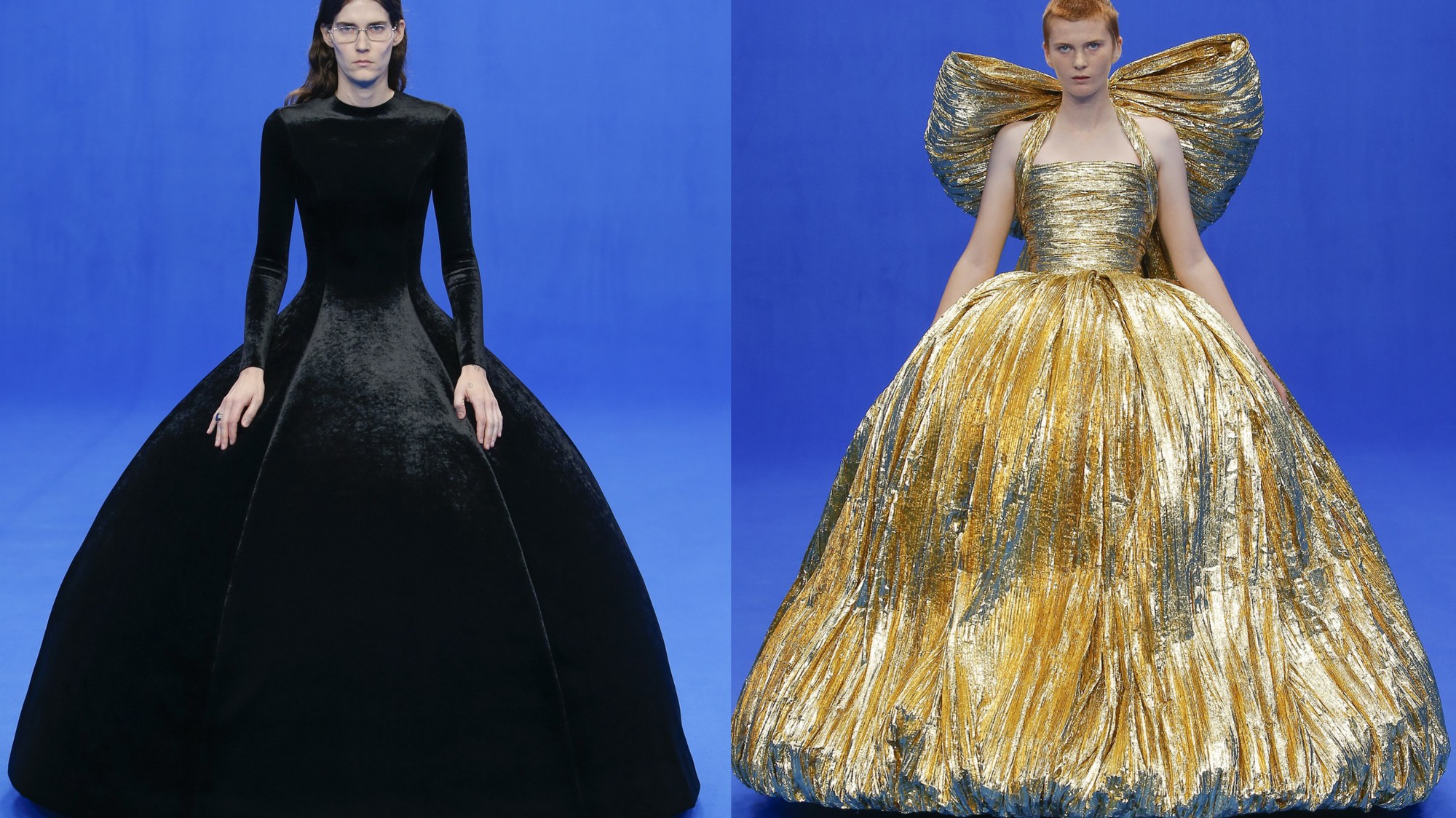The set for the Balenciaga show was an entirely cobalt assembly room — almost the exact shape as the United Nations, and the shade of the European Union flag — with a Mobius strip of a catwalk that spiralled down the space, descending into a small pit. Consider it a metaphor for the fate of the EU, a reflection of a discombobulating political landscape.
What made it all the more prescient was that Demna Gvasalia’s collection was about power — “power-dressing, no matter what one does as a job,” as his show notes read. His show was a strange cast of cinematic characters — the models were non-models, old and young: architects, gallerists, students, artists, musicians, couriers, engineers, waiters — so that parade of seemingly indeterminable people seemed to be turning that very idea of power on its head. The chilling soundtrack made it indeterminable whether these sombrely suited figures were the good or bad guys, the politicians or the proletariat. Who really has power? Who could — or should — have it? It was daring you asking you to question the order, daring you to hope for a better world.
It was thrilling. The sense of actually being there and engaging was amplified by the fact that Demna enlisted scent scientist Sissel Tolaas to create an olfactory atmosphere that riffed on associations with power. Tolaas created four smells — antiseptic, blood, money and petrol — which were released from behind the ceiling and curtains throughout the presentation, transforming the show into a full-on sensory experience. Prosthetic cheekbones and lips alluded to shifting beauty standards, proportions amplified in the same way that head-enveloping Uncle Fester parkas were lined with inflated puffa jackets.
As for the rest of the clothes, it was all about uniforms. “New Fashion Uniforms,” as Demna put it. There were the broad-shouldered suits that smelt of more than just petrol, but also the intimidatingly large shoulders of Dynasty-esque moguls applied to tracksuit tops and mysterious trench coats. There were denim-printed silk pyjamas (the message: not everything is as it seems) and plenty of those high-neck, perpendicular-shouldered silk dresses that Demna made his name with at Vetements, this time in pastiche prints of tabloid magazine stands, eighties power-dressing polka dots and perfume bottles — a nod to the bread-and-butter of fashion houses.
Though at Balenciaga, the lion’s share of sales comes from those twisted accessories and blown-up shoes. So in addition to all those extreme silhouettes and villainous tailoring, there were Hello Kitty handbags and the newest Balenciaga sneaker: The ‘Tyrex’, a hybrid of athleticism and a classic 9-to-5 office shoe. Part of the brilliance of what Demna does at Balenciaga is that it switches so seamlessly from twisted notions of the most casual, banal clothes to most spectacular. Nadja Auermann came out in black satin gown that was an almost carbon-copy of an original Cristobal Balenciaga creation, Bella Hadid slinked by in a velour minidress with the back tucked between the legs like cycling shorts. Silver and gold lurex ballgowns with bouncing crinolines (removable, in case you were wondering) had a surreal, slightly alien-like quality to them as they came bobbing down the EU spiral, a satire of the absurdity of no-so-stealthy wealth, a stark contrast to the “b@len©i@9a”-branded t-shirts. This is modern luxury.
Of course, we’ve seen those mantua-wide, larger-than-life-itself dresses in so many other shows. It’s become a party trick for designers to create an Insta-friendly moment, offer a taste of a fantasy lifestyle of red carpets and the idea of being able to afford someone else to physically help you get dressed. Maybe it was the bare faces, the smell of antiseptic or the trippy blue room, but Balenciaga’s giant dresses seemed like a reality, not just a catwalk dream. More significantly, they also asserted Demna’s own superpower to stage a show that simultaneously propels fashion forward, evoke desire and truly get beneath your skin.
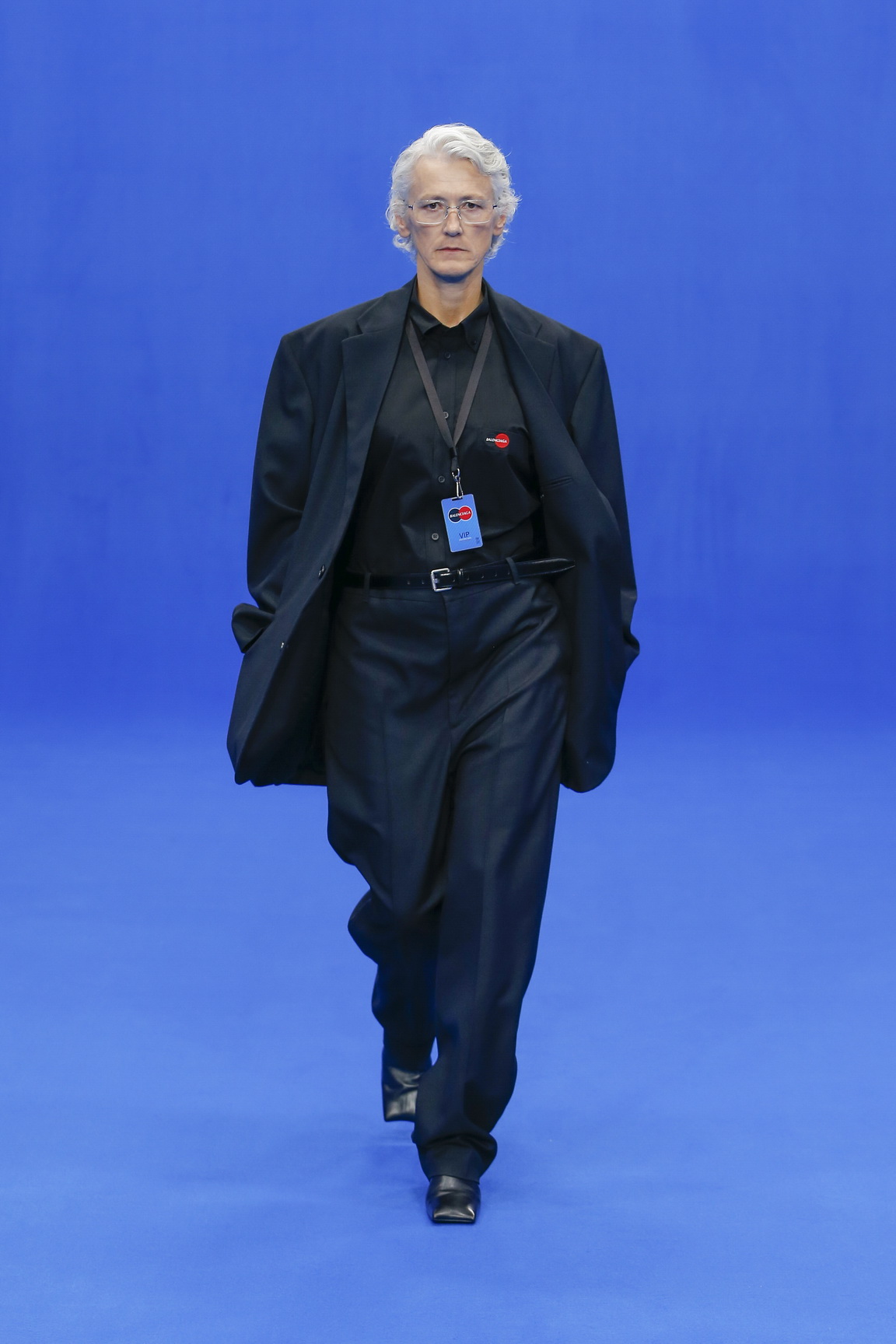

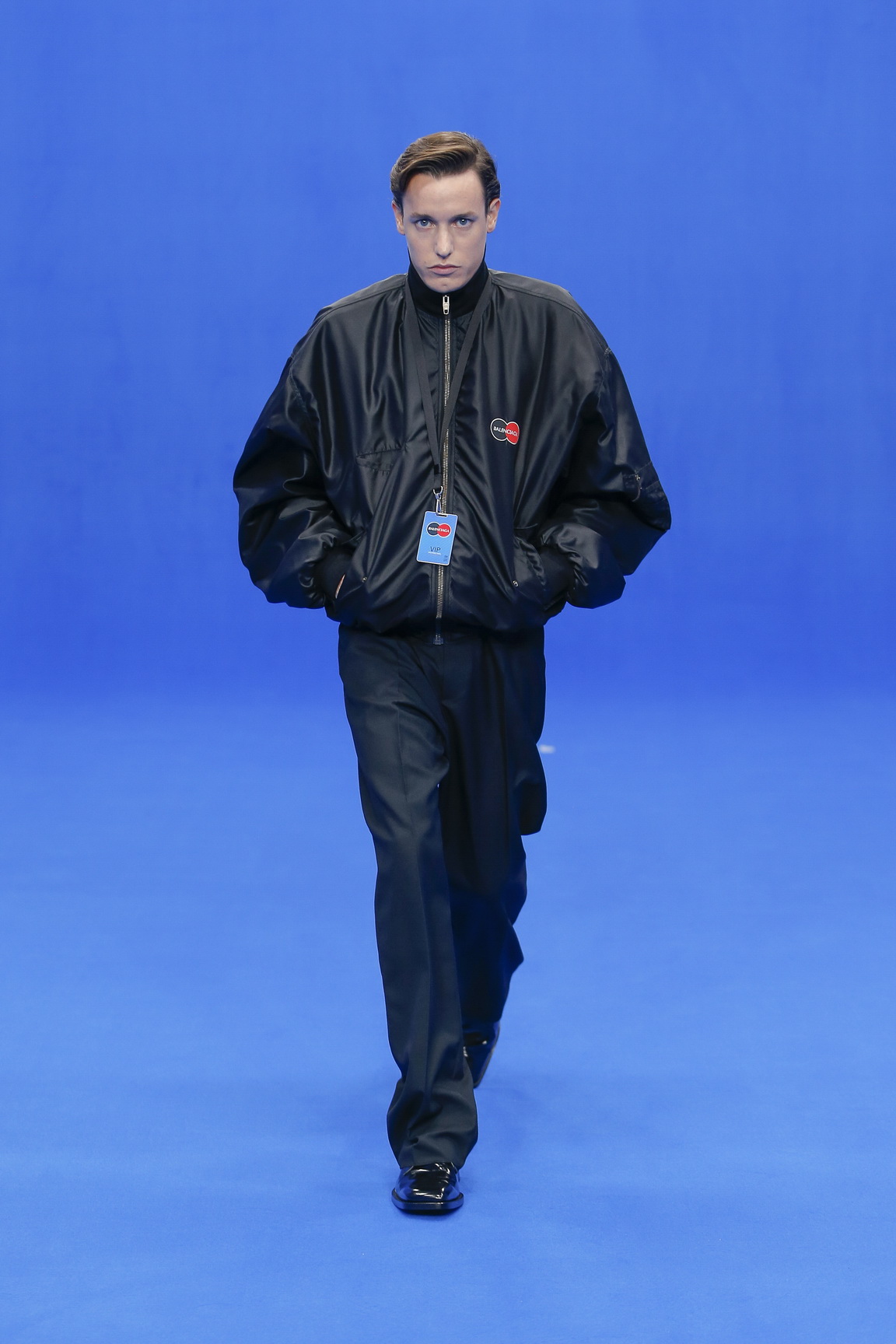
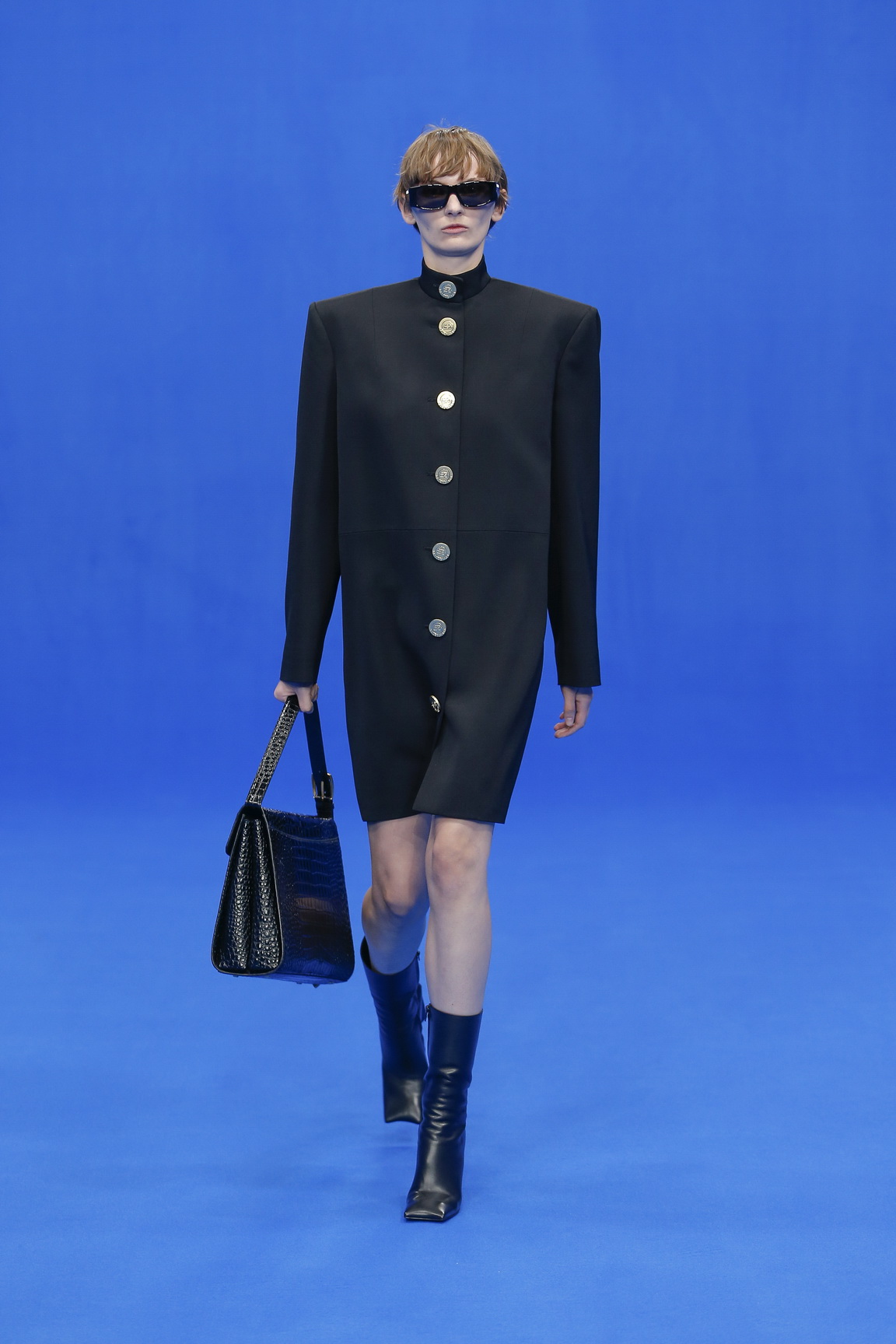
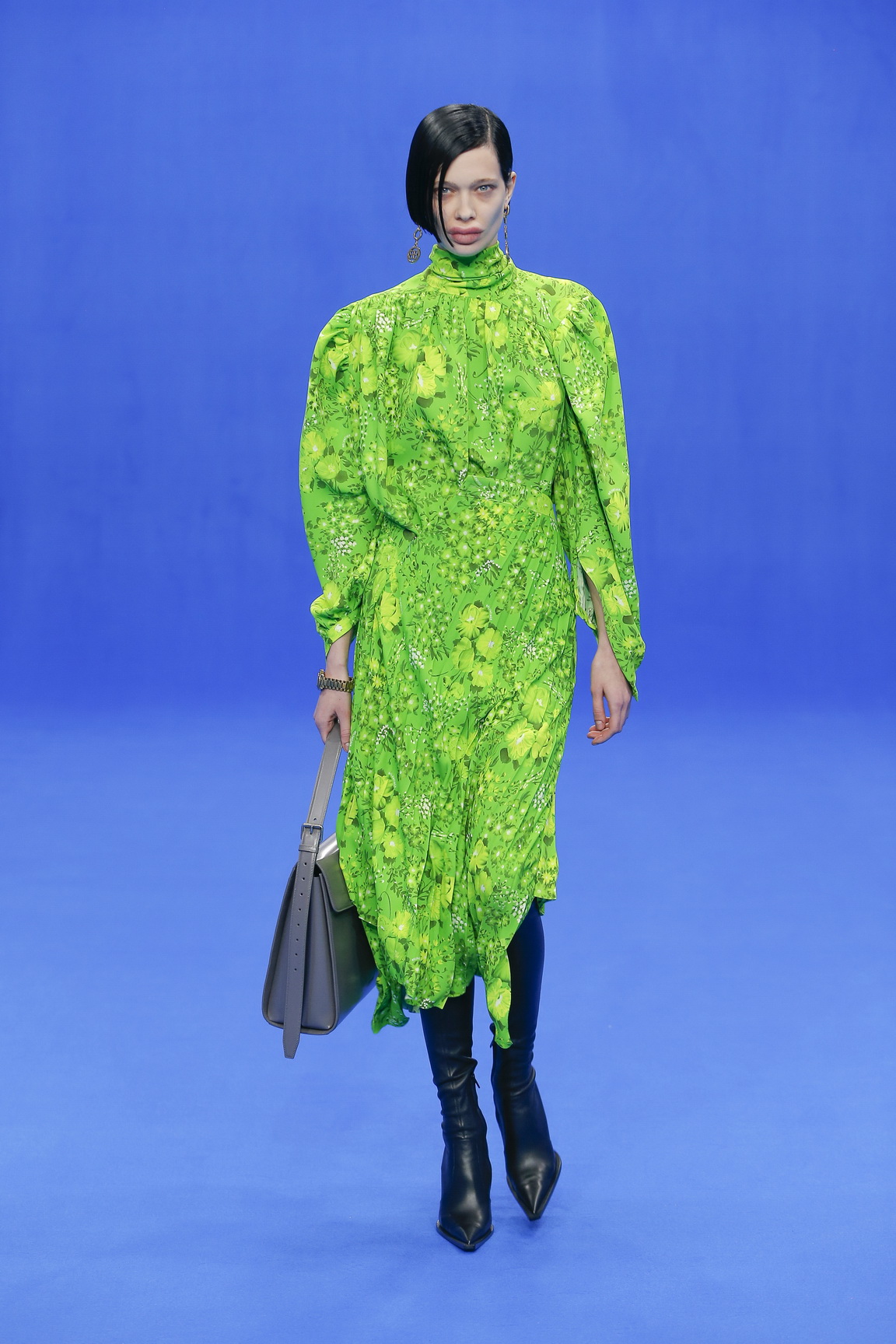

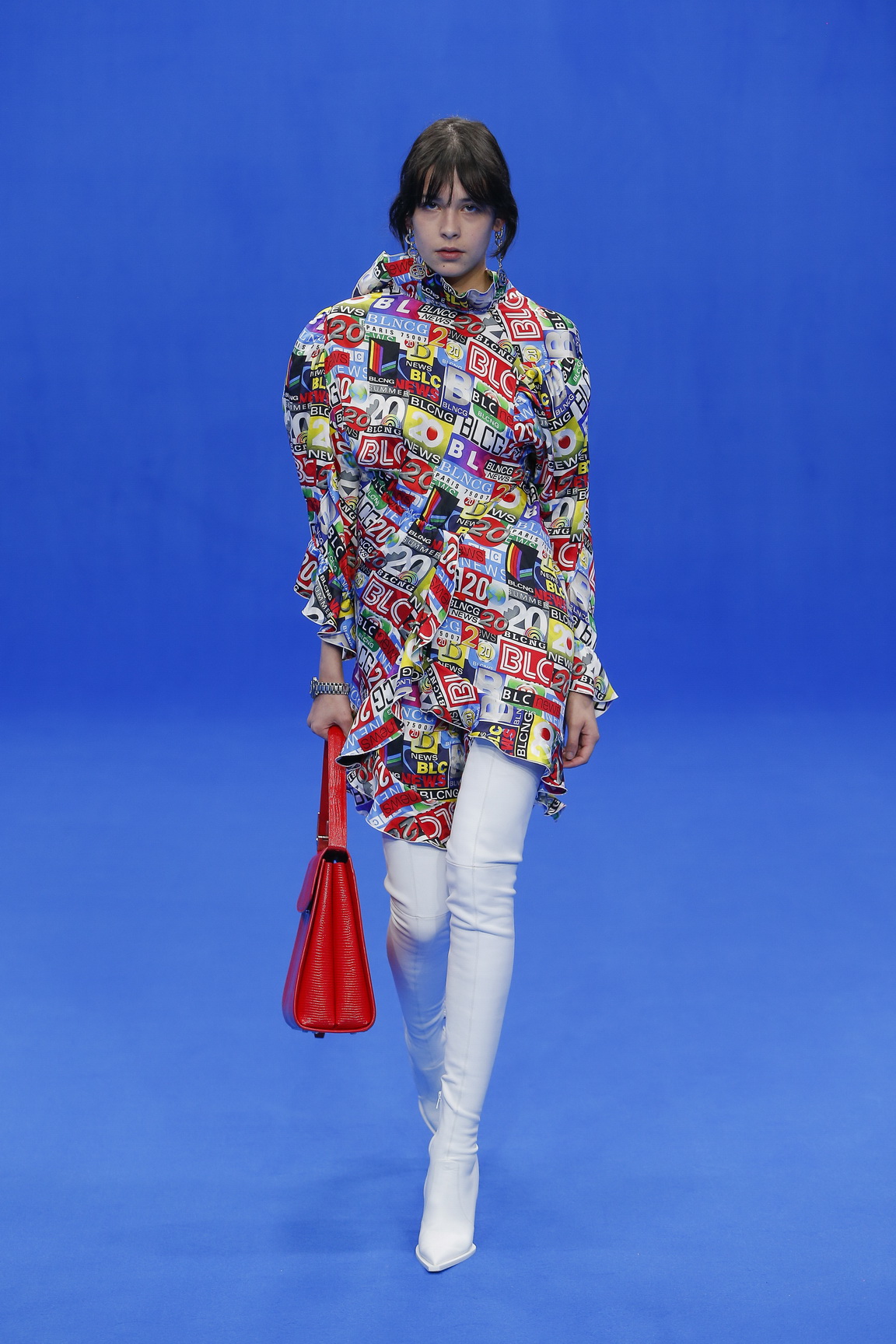

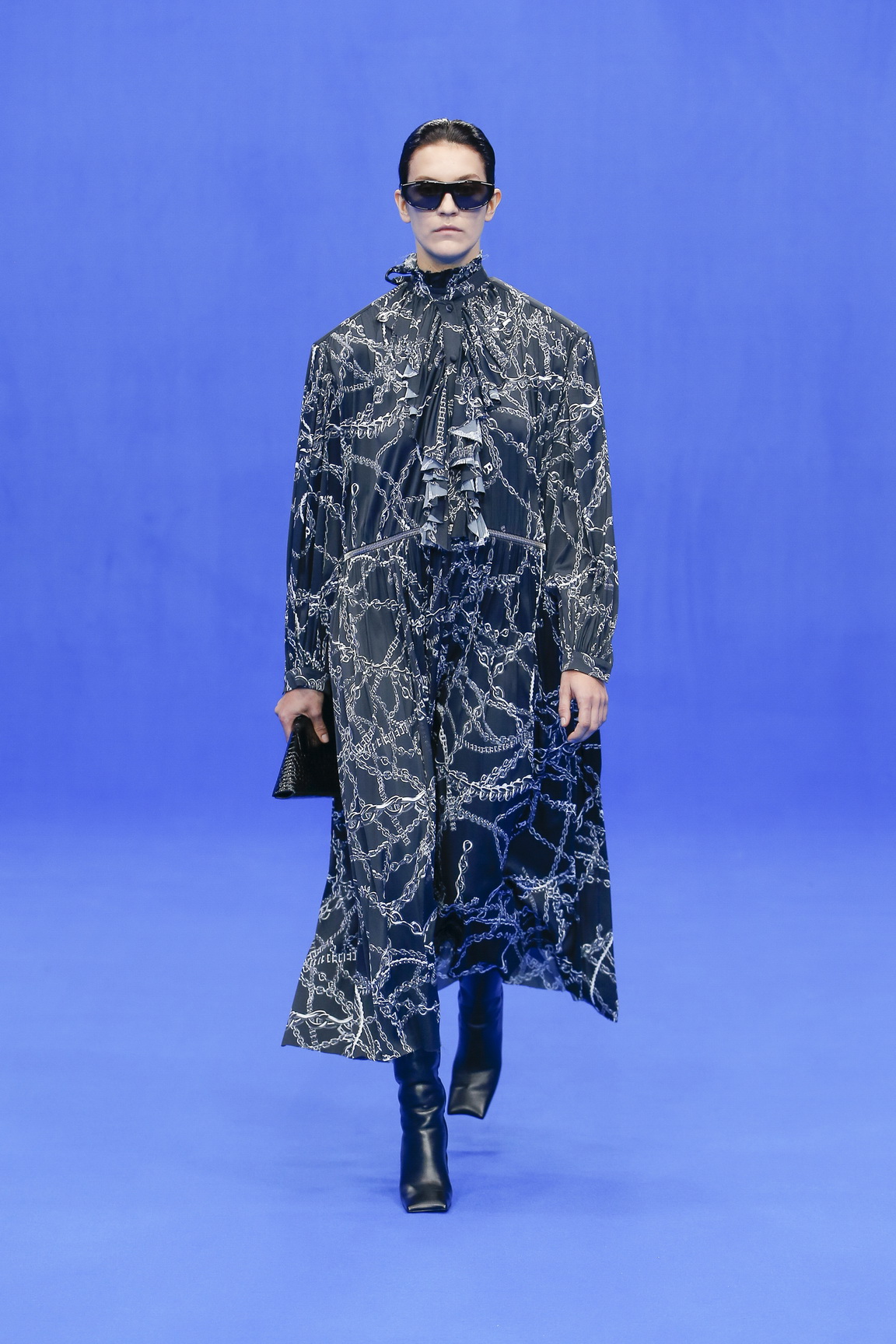
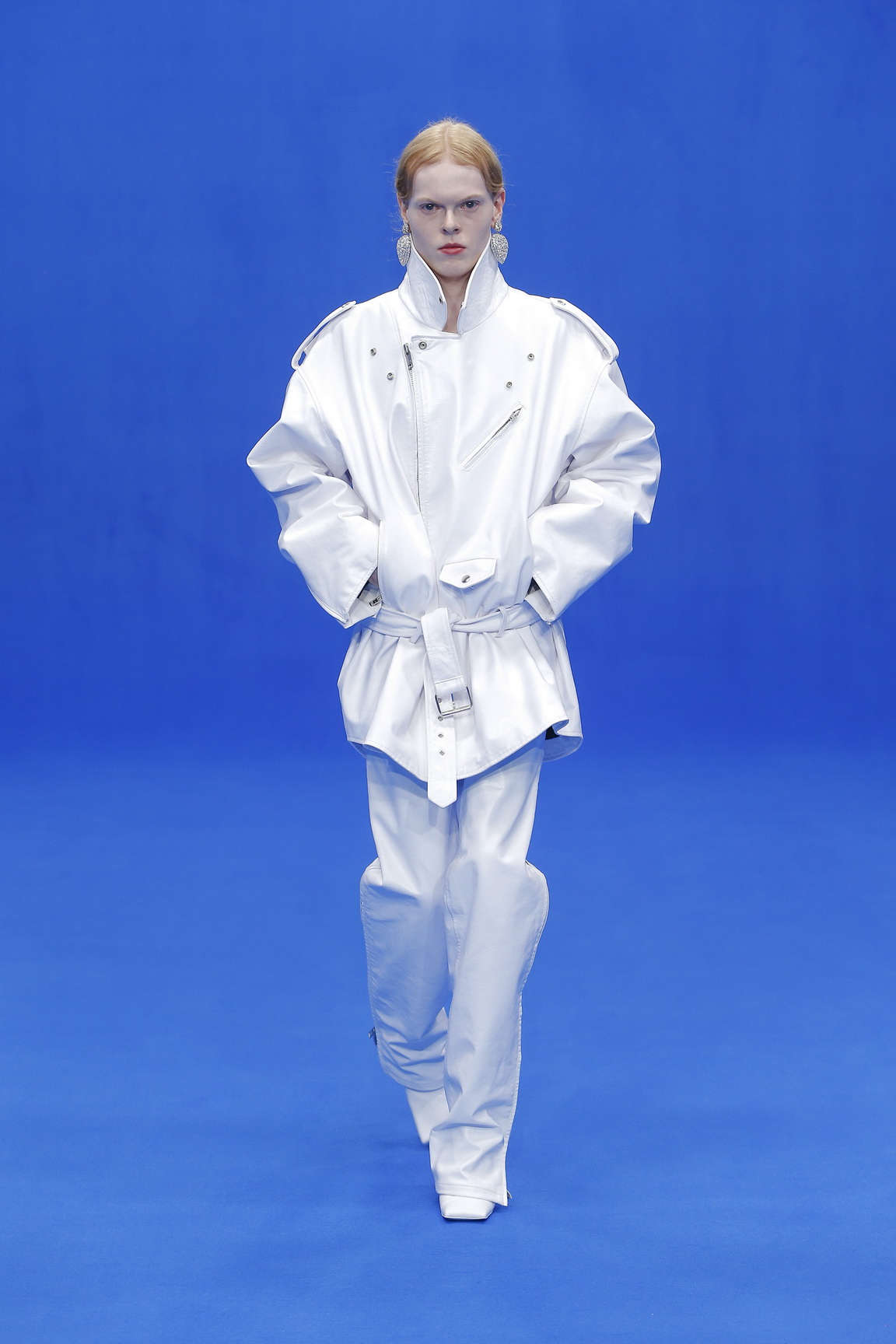
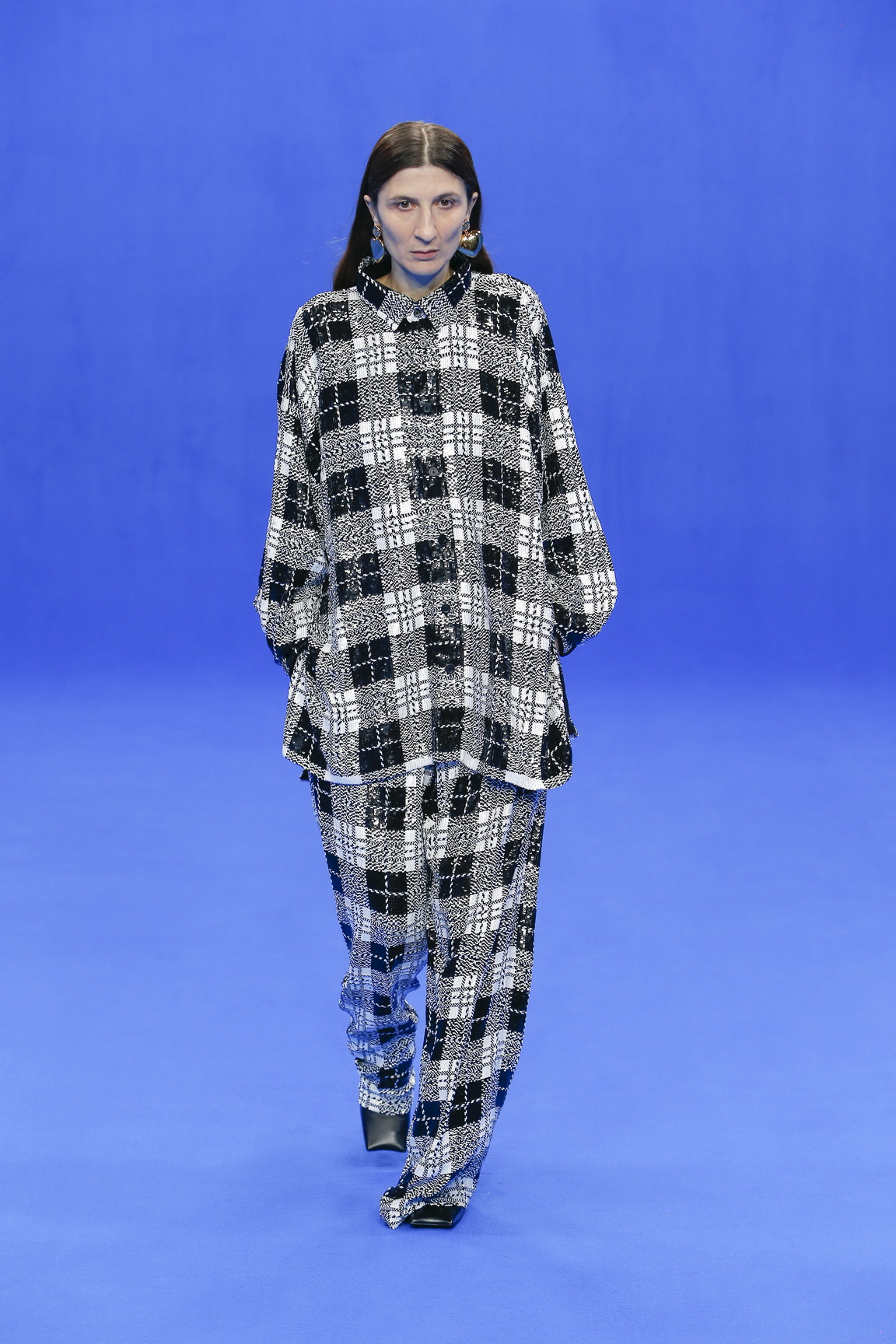
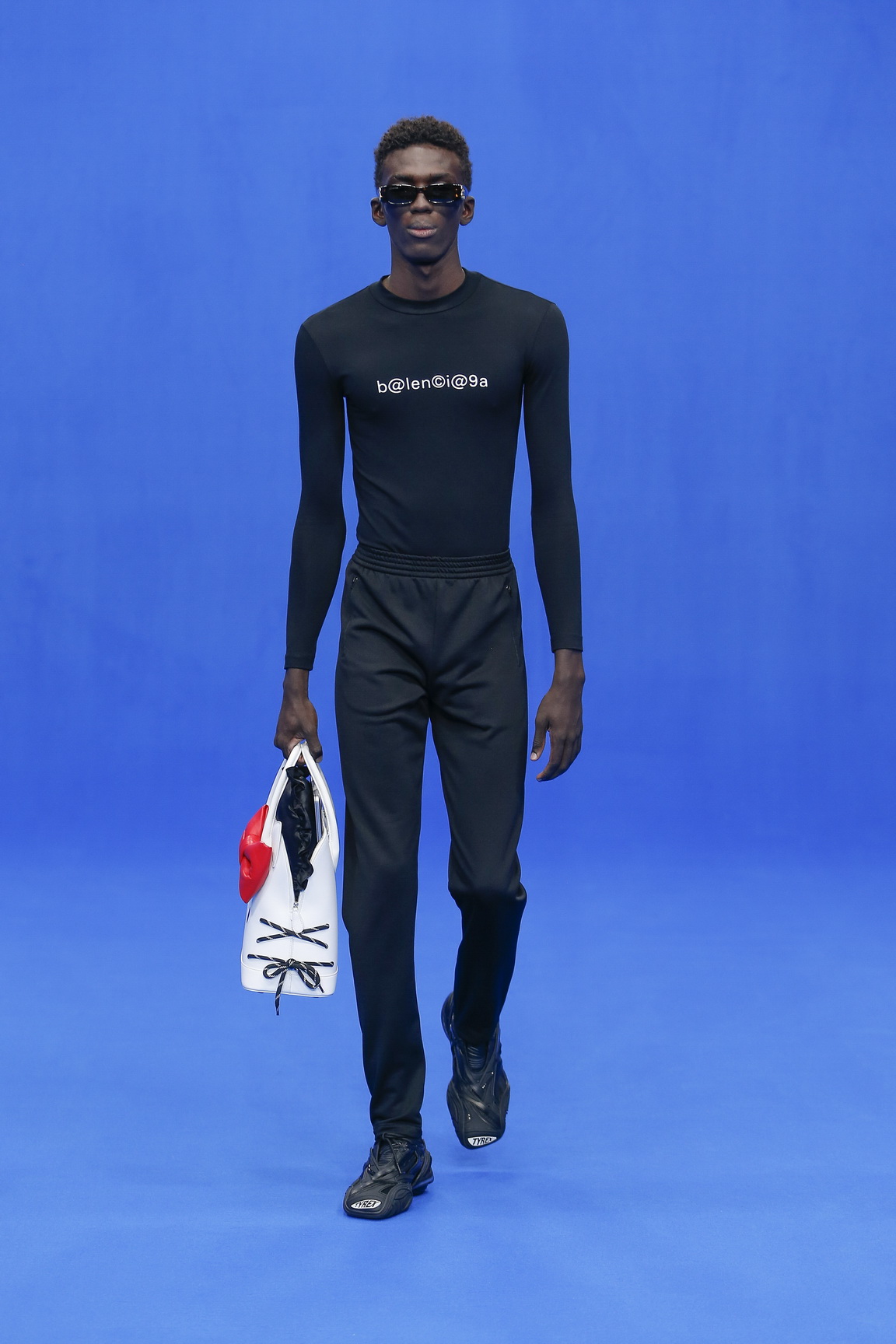
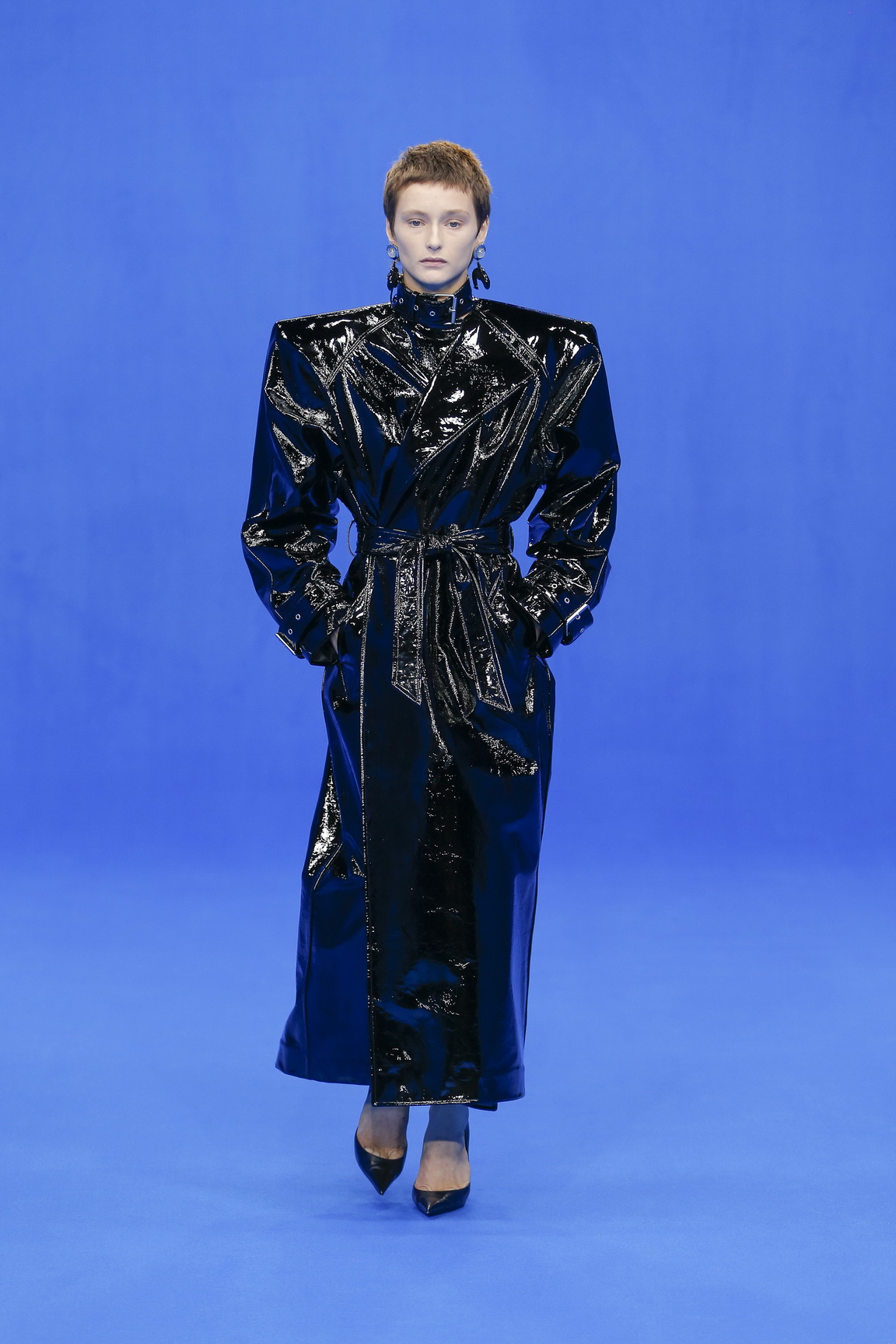
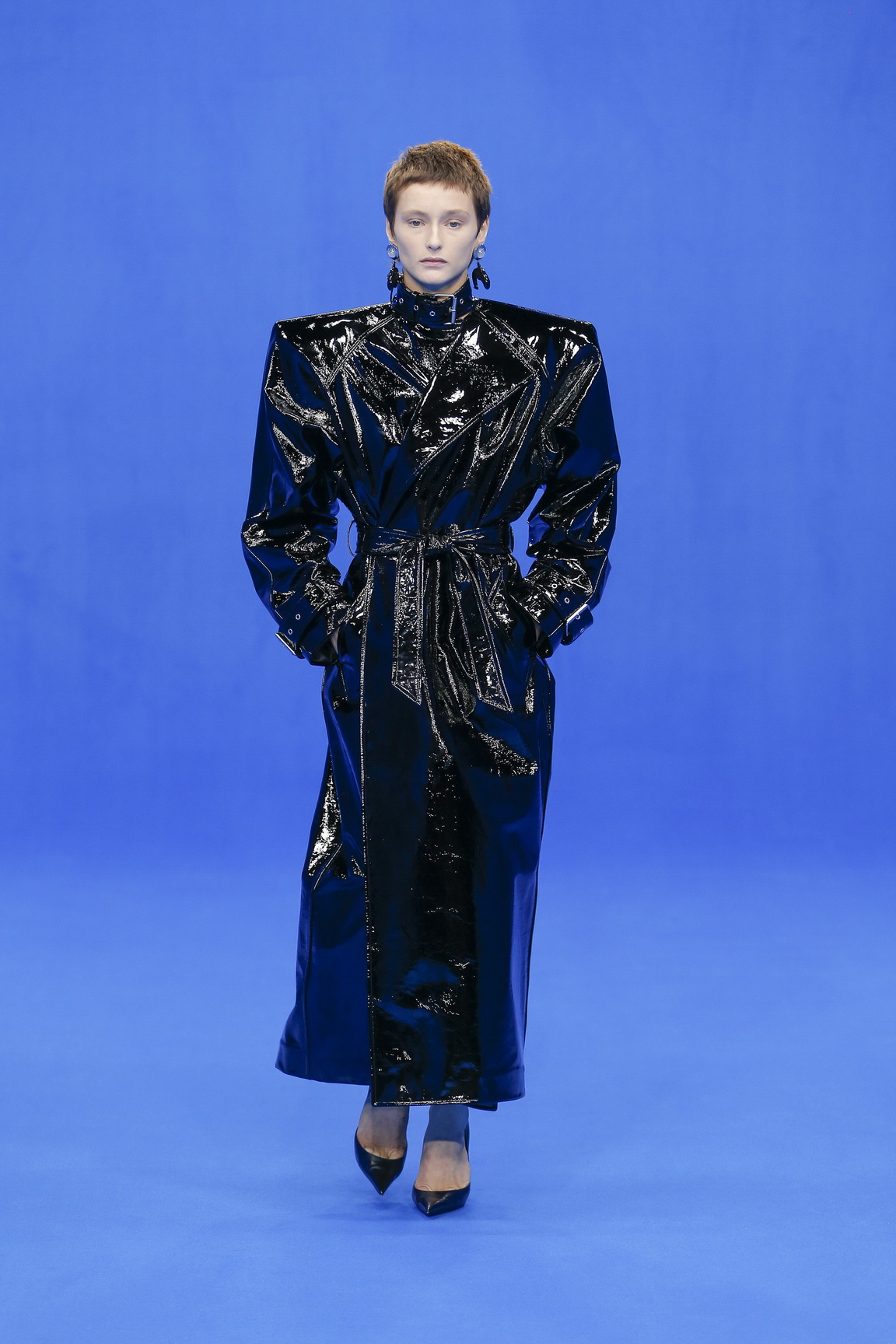

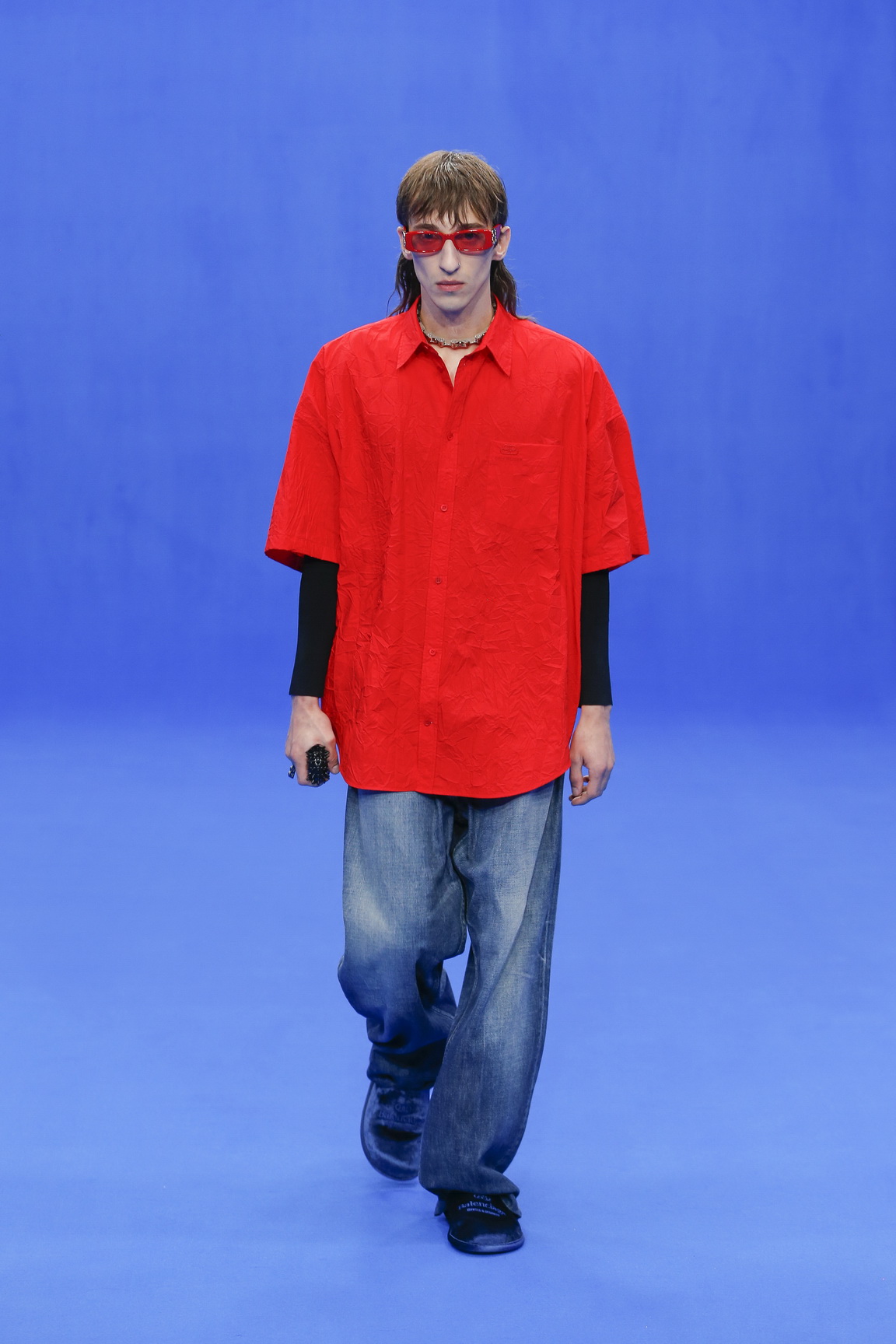
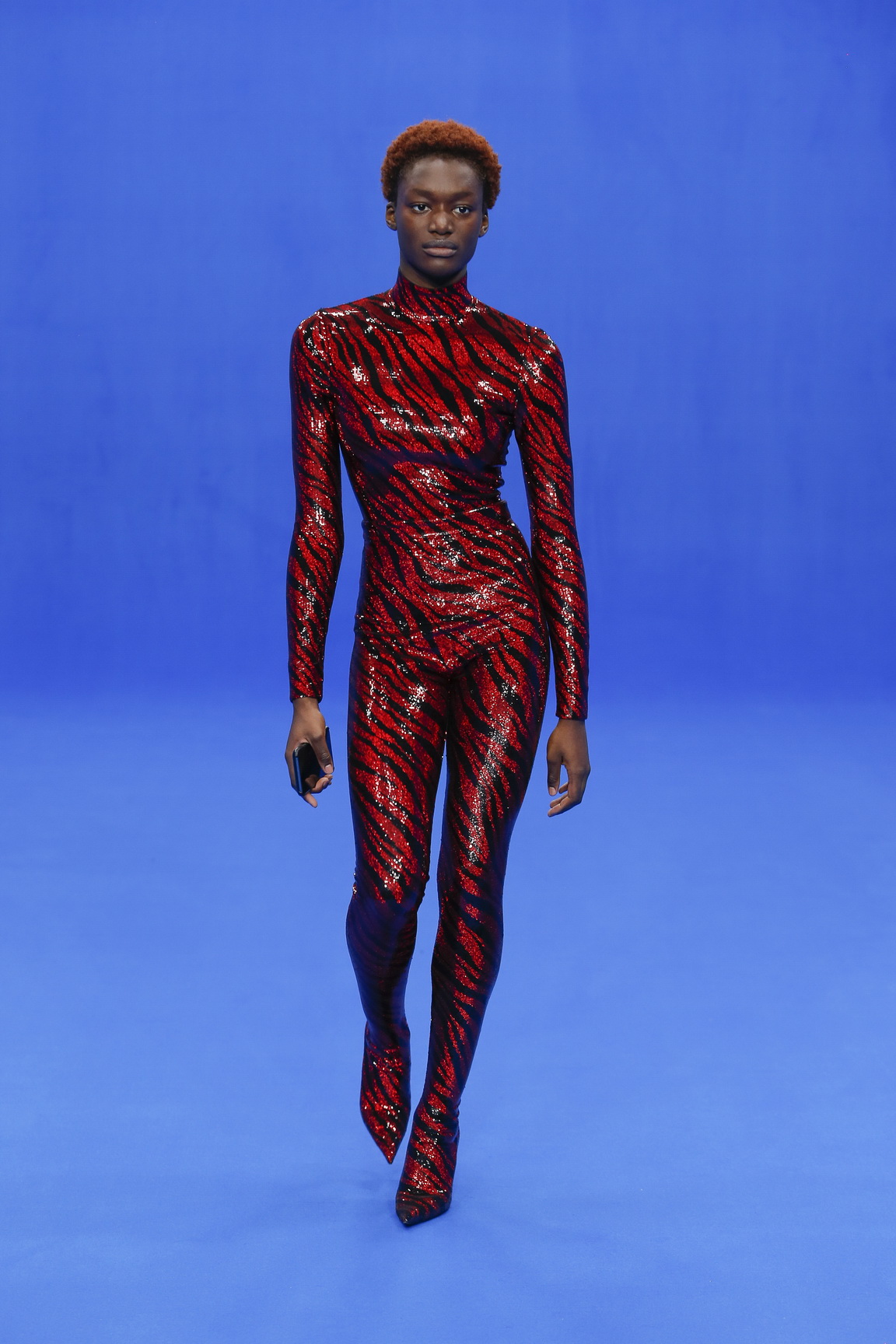

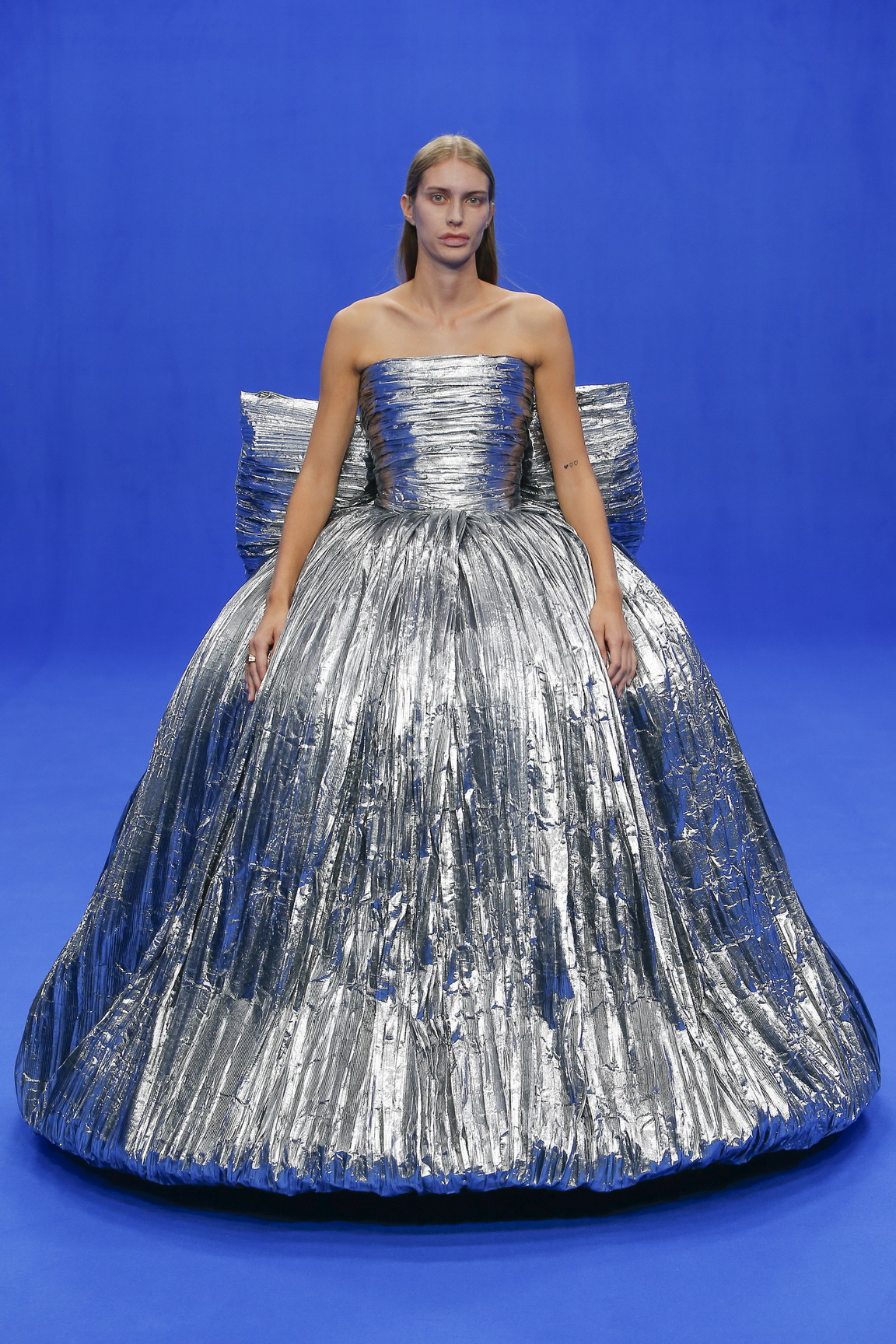
Credits
Photography Mitchell Sams
